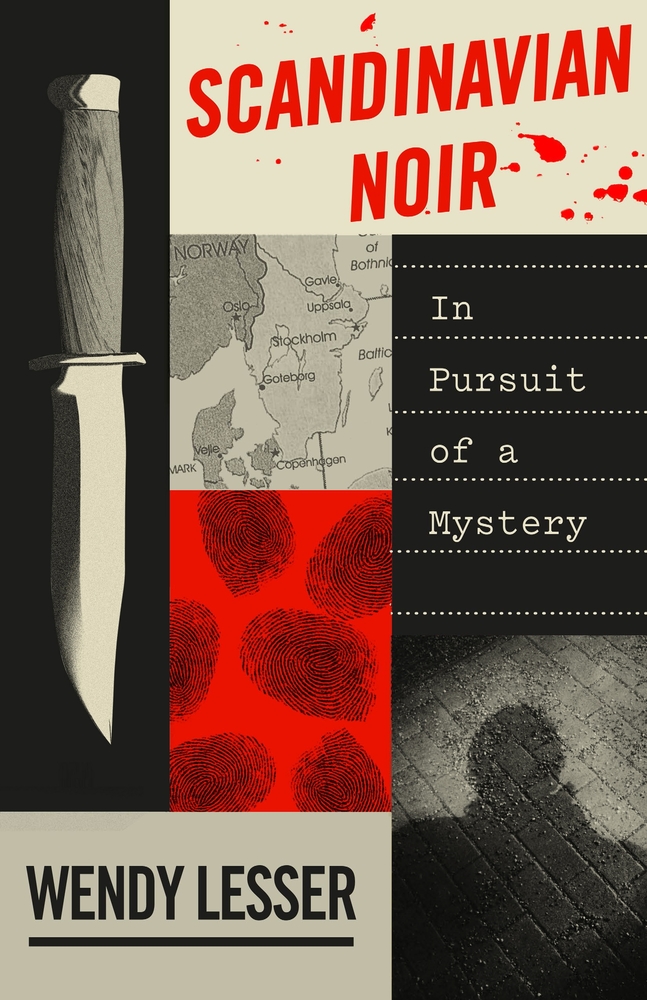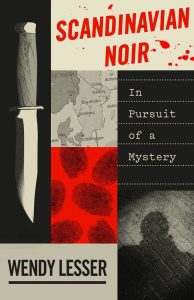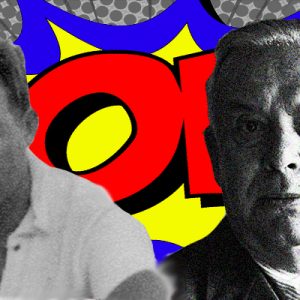It is with a blend of excitement and trepidation that she sets out one morning for Kurt Wallander’s hometown of Ystad. Will the correspondences between the fictional world of the past and her actual encounters in the present continue to be as moving as her Savoy experiences have been? Or has Henning Mankell got it all wrong, and will she find his version of Ystad unrecognizably different from the real place she is about to see?
The problems start as early as the Malmö train station, where she learns that she will be unable to buy a roundtrip ticket to Ystad. For reasons that are never made clear, she has to purchase a one-way ticket and then get her ticket back to Malmö at the other end. This is unnerving enough. But when, after a fifty-minute ride through rolling farmlands and occasional vistas of the sea, she debarks at the Ystad station, her anxiety increases tenfold. There is no Ystad station, it turns out, only a faintly marked crossing on the train tracks, next to a small, rather dirty-looking plastic and metal shelter. She crosses the road and looks for a ticket booth, but none is evident. Then she asks a bystander, and he directs her back across the tracks to the nearest Pressbyrån—a kind of Swedish version of 7-Eleven, where one can buy magazines, candies, and sundries. She goes up to the cashier, who admits that they do sell tickets to Malmö, but only within two hours of departure time. He is not positive about the schedule, but vaguely thinks the trains go once an hour on the half hour.
On her way into town she stops by the local library, which is also the local tourist office, and there she gets her first whiff of the lethal virus. She is able, as she expected, to pick up a map of the town, but also on display—on walls, on shelves, even on the counter between her and the information-givers—are posters, leaflets, and booklets about Kurt Wallander. Not Henning Mankell, mind you, the real-life author who indirectly brought all this fame and prosperity to the town. No, it is his character, grown larger than life, who has taken over everything.
As she leafs through Ystad’s Best Guide to Wallander (offered in English, Swedish, and at least two other languages), she learns that forty-four Wallander films have been shot in Ystad since 2004. Five different actors, including four Swedes and Kenneth Branagh, have taken on the part of the homicide detective. The film studio built to produce these movies and television episodes is still the largest to be found anywhere in Scandinavia, and all together the films have brought the Skåne region an estimated 250 million Swedish kronor (nearly $28 million at current exchange rates). A British survey conducted in 2014, the booklet announces proudly, “estimated the PR value of Wallander in social media at SEK 210 million. The name Ystad has become known globally and has seen a large viral spread thanks to the Wallander films.”
She understands that this is not her Kurt Wallander—that quiet fellow who misses his laundry appointments, regularly monitors the outside temperature, and spends hours thinking about his cases—but a grotesque cinematic avatar. Despite his fictional origins, this filmic Wallander has apparently grown so real that his “locations” in the city are presented as part of the visible, and visitable, geography. His house on Mariagatan, the café where he regularly drinks, the place where he buys his opera CDs, the bookstore in the town square where he shops for books, even the street where he parks his old blue Peugeot: all are cited with exact addresses in the Wallander guide and marked with prominent dots on the tourist maps.
The situation brings to mind a passage from a novel she has just read recently, Eric Ambler’s 1959 Passage of Arms. There’s a scene in it where a couple of American tourists on a worldwide cruise are being taken around Saigon:
“That café there.” The driver pointed. “That was where Quiet American made bomb explosion. Many killed.”
They were coming to a square now. Greg looked from the café to the driver.
“But The Quiet American was a novel,” he said.
Article continues after advertisement“Yes, sir. That is café back there. I was near at time of explosion. Was very bad.”
“But it was fiction,” Dorothy said. “It didn’t actually happen.”
When Ambler wrote this winking tribute to his colleague Graham Greene, Greene’s prescient 1955 Vietnam novel had only been out for a few years, and both authors were still very much alive. What was gently satiric in that context becomes much more ghoulish here in Ystad, with Henning Mankell already dead and his fictional creation dancing ever more heavily on his grave. For the first time ever, she begins to sympathize with Mankell’s expressed desire to get rid of Wallander, an effort that finally ended (though only on the page, it seems) with his giving the character terminal dementia.
The town of Ystad was probably a quiet, pleasant place once upon a time, with its winding, cobbled streets and small pastel houses leading down to a working harbor. Now, however, it is at least as touristy as Visby, though without the dramatic setting or the ancient ring wall to justify the number of day-trippers. The old city center resembles a well-preserved stage set, a back-lot version of its former self, with a Stortorget catering largely to tourists and a pedestrianized row of shops purveying useless and often Wallander-related items. She is relieved, in a way, to emerge from this deadening cuteness into the real-life suburbia that surrounds the old town. There she makes her way along a nearly deserted traffic corridor until she reaches the long, two-story, window-filled building that constitutes Ystad’s actual police station. (Resembling as it does an unobtrusive office complex, it is nowhere near scenic enough to have served as the televised police station, which apparently moved over the years from a set inside the film studio to a disused railway-station building and thence to an abandoned handicraft factory.)
Patric Nihlén, the police officer with whom she has an appointment, comes down to greet her in the small lobby, where she has been sitting among numerous families who, as in Oslo, are at the police station to get passports. A portly middle-aged man dressed in partial uniform, he leads her up to his office on the second floor, mentioning as they climb the stairs that she is the second writer to come asking about Wallander in a ten-day period. Just last week, a colleague of his had an interview about Wallander and Mankell with a Stockholm journalist.
Patric is not a homicide specialist. The town of Ystad is far too small to require its own homicide department, and when an unusually high number of murders took place in the district— five within an eight-month period, back in 2014 and 2015—they had to call in outside help. “We don’t have the capacity to solve it on our own,” Patric tells her, “so we have to have help from Malmö.” But he has been present as part of the first-response team at a couple of murders that took place just outside of Ystad. One of them involved a son killing his father, probably over drug-related matters; in the other, a husband shot his wife. Though he had been working as a policeman for years at that point, he still found the sight of the dead bodies shocking. “It didn’t seem real,” he says.
In the case of the wife-murderer, he and his partner had just finished one job and were eating burgers in their car when they got the call. “In a small, small town outside Ystad, a woman was killed by her husband. He shot her. And we were the first ones there, me and my friend”—or rather, they arrived at exactly the same time as the ambulance team. What most upset Patric was seeing the wife’s body, before it was taken away. “A small woman lying just inside the main door of the house, shot in the back. It’s hard to describe how you feel. Afterward me and my colleagues always sit talking, because it’s not normal to see dead people in this way.”
At that time Patric was a sergeant heading up a team of five men and three women. Now he is a community relations officer, responsible for monitoring Ystad’s nightclubs and pubs. He regularly works with these liquor-purveying establishments in an effort to reduce the number of assaults. “In common assaults, eighty to ninety percent are related to alcohol,” he points out. They might have only one murder a year in Ystad, but they are likely to have three assaults a week, particularly on weekends. “Sweden is kind of special in that way. The drinking problem during the weekend is when the assaults outside the pubs happen. Sometimes it happens inside, but not very often.”
“Do the number of assaults go up on holidays, like Walpurgis Night and Midsummer’s Eve?”
“Sometimes an increase in crime is related to those special occasions, but then the next year it’s down again, so that is not consistent.”
She tries to find out whether any of the other crimes resemble the extreme events depicted in Wallander novels. They have very little problem with rape in Ystad, apparently. As for child abuse, “We have it like in every district, not higher or lower than any other part of Sweden.” Two women officers who work downstairs from him handle those crimes against children. There is some smuggling at the port (“We know that a lot of things stolen in Sweden pass out of the country through Ystad port, mainly to Eastern Europe”), but not much of it is connected with violence. As for serial killers, he cannot recall a single one in the immediate Ystad neighborhood. But he knows of at least one from Malmö, a few years back, and he is pretty sure there have been others in Sweden. The Malmö serial killer, who was convicted in 2012 of crimes that took place in 2009 and 2010, was a native-born Swede who was killing people of other nationalities—“dark-haired people,” as Patric puts it. “Yes, a racist.”
Suicide is something he has had to handle locally, and what makes him sad is that it so often involves young people—“young love that was broken,” he hypothesizes. A few years ago there was a rash of teenagers jumping in front of trains, and more recently there were three young guys who killed themselves, two of them related to each other. “There was some connection between them, but we never did find out why,” he says. The suicide rate in Ystad isn’t as high as in the big cities, but it rises near Christmas and in the summer, he tells her.
“Why the summer?”
Because there are higher expectations in the warm, light months, Patric thinks. People feel they should be happy then, and if they’re not, they become especially distressed.
She wonders aloud why Henning Mankell chose Ystad, of all places, as the setting of his Wallander novels.
“I think he knew someone. I think he did know one person inside this police house.” Patric says he is just guessing at this, but other people at the station have come up with the same theory. “Many of the things about this character Kurt Wallander fits this person here. He had a similar personal life: divorced, lived alone, two children. Drank a bit, as most Swedes do. And he was a very good police officer, very clever.”
The man was named Kurt Ingvar Wald—not all that different, Patric points out, from the fictional character’s name—and he was always put in charge of the bigger crimes. “He was a man who could answer many questions. If you had a problem on a case, you could go to him and he had good answers. He also had a good humanity, both inside and outside the police station. A very kind person.” Patric asserts this with a certain authority, since he himself knew the man, who retired only about ten years ago.
“Is he still alive?” she asks.
“Actually, I saw him yesterday, walking with his dog.”
They start to talk, then, about the effect Wallander’s fame has had on the town. Some of it seems a bit laughable. About a decade ago, Patric tells her, a German tourist actually came to the police station wanting to meet Wallander, and they had to inform him that the detective wasn’t real. Even now, if Patric is downtown wearing his uniform during the summer, at least two or three tourists a week will come up to him with questions. “They often ask about Wallander. And they ask about his house—where he lived.”
She remarks on how strange this seems, with these two parallel existences, the real-life police force and the filmed Kurt Wallander, both occupying the same place. He agrees, and then goes on to tell her about other things that have changed in Ystad because of Wallander. There used to be an annual summer celebration every July called the Monks’ Festival, named after the monks who inhabited the town centuries ago. People would dress up as monks and party together in the streets. And there was also a race called the Monks’ Race—not marathon-length, but shorter, with one race for adults and one for children. Now the former is called the Wallander Festival, and the latter the Wallander Race. And even the café where the movie-Wallander drank, which used to be called Fridolf ’s, has now been renamed the Wallander Café.
As she wends her way back through the tourist-filled town toward the train station (where she does, indeed, succeed in buying a ticket at the Pressbyrån, and where the train to Malmö comes, as predicted, at half past the hour), she thinks to herself that she has rarely felt so desperate to get away from anywhere. If I had to live in Ystad, she muses, I’d drink too much, too.
Excerpted from Scandinavian Noir: In Pursuit of a Mystery. Copyright © 2020 Wendy Lesser. All rights reserved. Printed with permission of the publisher.



















